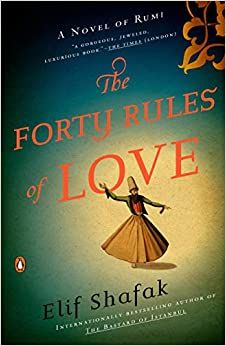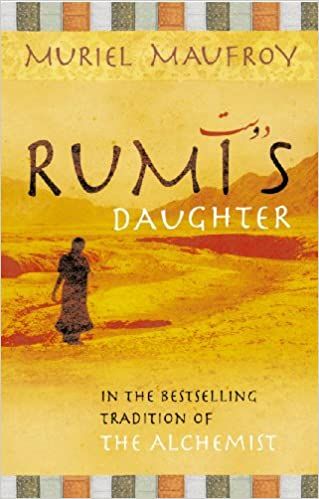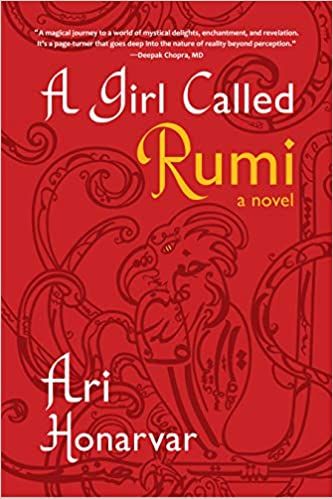Who Was Rumi?
Jalal-Ud-Din-Muhammad Rumi was a Sufi master and Persian poet born in 1207. He is known for his works of poetry around the themes of love and mysticism, and his works have sold millions of copies over the years and continue to do so for years. But, who was Rumi?
Who was Rumi?
Known to be the master of the ‘ghazal’ – the form of sonnets with intense, sharp rhythms and lyrics, Rumi was an esteemed preacher before he was a poet. Charismatic and eloquent, he taught the word of Islam throughout his home city of Konya. But his spirit was always restless and sought respite from his huge following. This is when he met Shams of Tabriz.
Shams, with his scruffy hair and torn clothing, existed on the outskirts of scholarly circles. He had a keen wit and penchant for calling out farces, particularly those that existed in scholars of the time and their desire to accumulate large followings. He stumbled to Konya in search of invigorating conversation, and having heard of Rumi’s intellect, knew it was there where he would find it. To know of Rumi without Shams is to know an incomplete Rumi, for it is after meeting with Shams that Rumi became the poet we know today.
Rumi and Shams of Tabriz
Shams set out to free Rumi from the shackles and conventions of society. On occasion he would take Rumi’s books from him and demand that Rumi use his own words and voice to converse with him instead.
Shams introduced Rumi to the concept of ‘sama,’ which means deep listening. Conventionally, it was the practice of listening to a book with the intent to absorb knowledge and build concentration. For Shams, it meant the equivalent of losing oneself. He introduced the concept to Rumi as the whirling dance which is equated to a devotional practice in Sufism: “With arms extended, the right palm turned up to the sky and the left down to the ground, the dancer becomes a conduit between heaven and earth, engaging in a 360-degree embrace of creation.”1
Their companionship, however, was short-lived. After a mere two years (some claim it to be three), Shams disappeared from Rumi’s life without a trace. Speculators say that he was murdered by one of Rumi’s children, while some have more mystical explanations.
This separation left Rumi distraught. From a scholar, he turned into a fanatic poet writing sonnets on sonnets looking inward, trying to cope with Shams’s disappearance while also practicing what he learned from Shams about letting go of all that binds you.
Love has many facets in Sufism, including the love one feels for God and the love one feels for his creation. Rumi’s poetry is singular in that it is open to interpretation, and knowing what you know of his companionship with Shams, you see his anguish and transcendence pierce through. His work speaks to the desire to get lost in the love of a deity, but also the love for his companion who is no longer near him.
Rumi’s Poetry and its Endurance
Following the disappearance of Shams, Rumi compiled over “three decades over 3,000 ghazals, 2,000 robais (the four-line pithy rhymes), and a six-volume spiritual epic in couplets (called the Masnavi).”2
Rumi’s work covers many aspects including love for God, creatures around him, and the Prophet Muhammad (esteemed prophet in Islam). Through the ages, his works have taken a much more secular perspective coming to the aid of those who seek a deeper and spiritual outlook on life.
As an admirer of his works myself, I feel his works endure because they are timeless messages of looking inside oneself and letting the zest for life never burn out.
Simplicity
To fall in love with Rumi’s message is to simply fall in love with his poetry. It is a credit to the translators and interpreters of his works who make it accessible to all, but not all can be taken from the source. His essence transcends borders, language, time. His style of writing was almost radical. Where the scholars around him were in love with their words, his writing was short and open to interpretation.
One of my absolute favorites from him includes:
These spiritual window-shoppers,
who idly ask, ‘How much is that?’ Oh, I’m just looking.
They handle a hundred items and put them down,
shadows with no capital…
Even if you don’t know what you want,
buy something, to be part of the exchanging flow.
Start a huge, foolish project,
like Noah.
It makes absolutely no difference
what people think of you.3
Looking Inward
A lot of Rumi’s work speaks of transcending the ideas of a physical plane and existence. His poetry speaks of looking inward and all that you see around you to find the validation or affirmation you seek. His work stands on its own two feet leaving the interpretation to each person as they seem themselves. What is more timeless than that?
You lack a foot to travel?
Then journey into yourself!
…It leads to transformation
of dust into pure gold!4
Love of All That Surrounds You
Rumi’s works have always been about appreciation and love and letting go of feelings of hatred and jealousy that do not serve anybody. His poetry was very much about getting lost in the beauty of a moment, in the drip-drop of the rain. Is it any wonder that so many find solace in it after a day of so many artificially created stressors?
Those who don’t feel this Love
pulling them like a river,
those who don’t drink dawn
like a cup of spring water,
…those who don’t want to change,
let them sleep.5
Rumi in Fiction
If you like me find yourself turning to books to dive deep into rabbit holes of your choice, there is a fantastic canon of literature out there that I have been making my way through. Here are some for you to peruse.

Forty Rules of Love by Elif Shafak
This tells the story of Ella who is an unhappily married 40-year-old woman who takes the job of a literary agent. It is there she encounters the manuscript titled Sweet Blasphemy, which tells the story of Rumi and Shams of Tabriz. The story unfolds as two parallel timelines as we follow Shams teaching Rumi his lessons of love and Ella in the present-day learning them for herself.

Rumi’s Daughter by Muriel Maufroy
This tells the story of Kimya, who comes under the wing of Rumi and marries the mystical Shams. Theirs is an unusual union, for Shams spends all his intentions on the longings for God and transcendence through time. Their marriage comes to be dissolved with Kimya’s death, after which Shams disappeared. Based on one of the common speculation about Shams’s disappearance, this is worth investing time into.

A Girl Called Rumi by Ari Honarvar
This one is a far-reaching one. It tells the story of Kimiia, who is haunted by her Iranian childhood and is confronted with it in her mom’s garage in California. It is here that she collides with a giant bird that makes her recount her experience as a child in Iran and with a mystical storyteller who led her through the mythic Seven Valleys of Love.
I have grown up listening to Rumi’s words and those of other Sufi poets being quoted, misquoted, being woven into songs, and what gets me every time is the sheer fact of existence does transcend all the artifices that hold us back. I hope you discover this and through Rumi’s words find the courage to peel some of them away.
References
- From the introduction to Gold by Rumi.
- From Rumi: Unseen Poems by Brad Gooch and Maryam Mortaz
- Rumi, ‘We Are Three’, Mathnawi VI, 831-845
- Look! This is Love – Poems of Rumi by Annemarie Schimme
- “Like This” Coleman Barks, Maypop, 199

إرسال تعليق
0 تعليقات